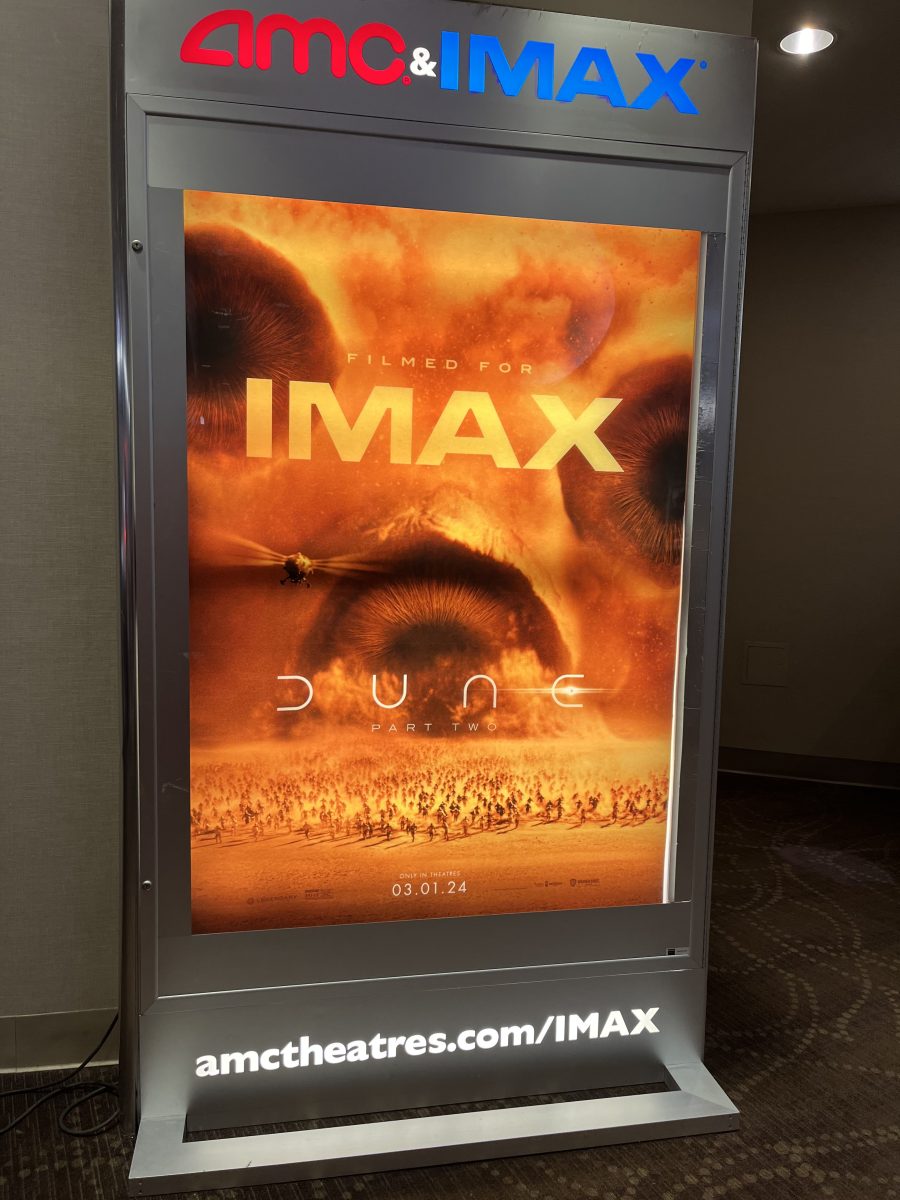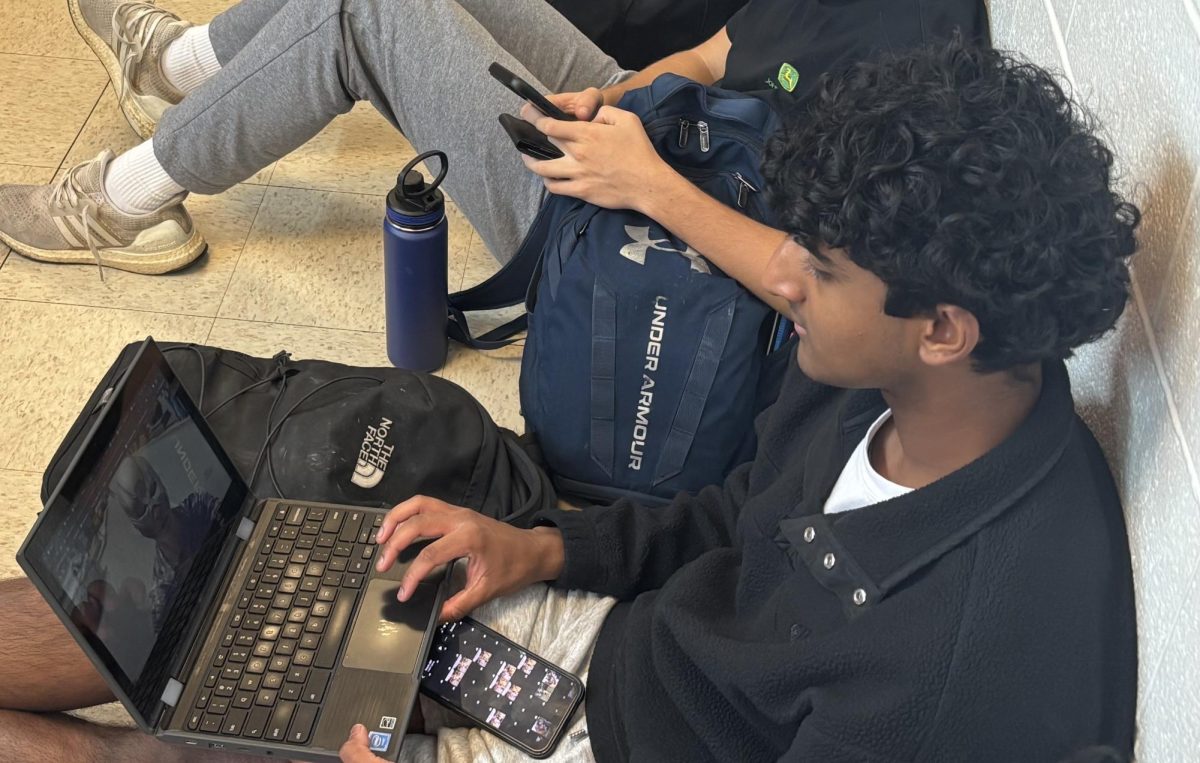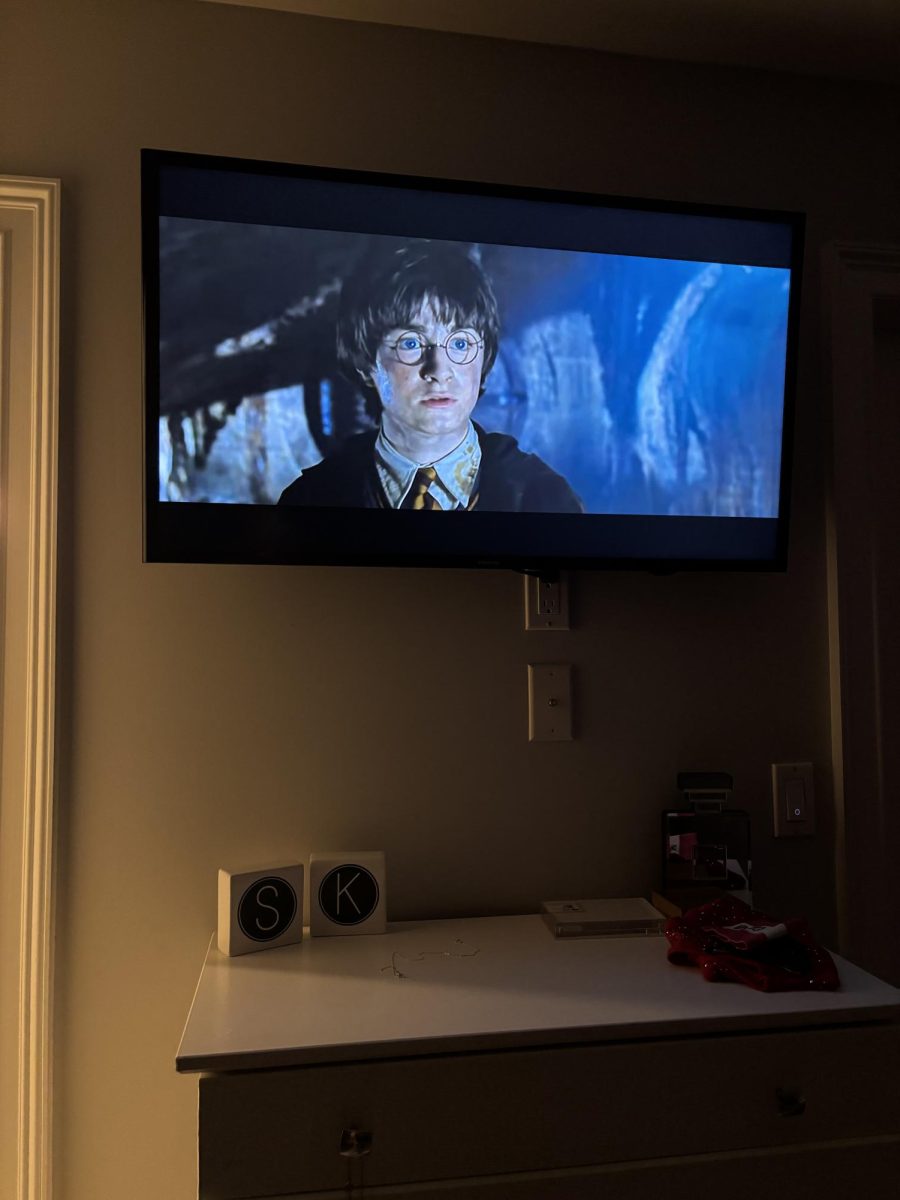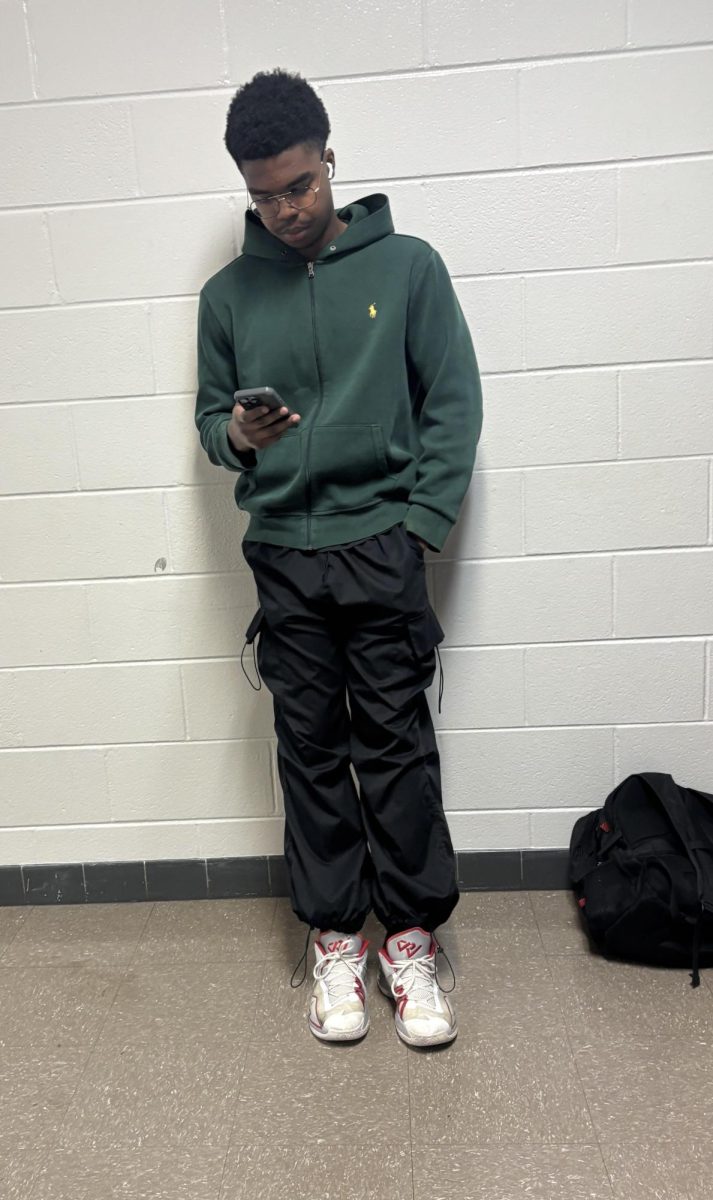“May thy knife chip and shatter,” Paul Atreides (Timothee Chalamet) says, as he stands toe to toe with his Harkonnen opponent, Feyd Rautha. “May thy knife chip and shatter,” Feyd Rautha (Austin Butler) mimics before the knife duel begins. You can hear each breath in the silence as you sit in the IMAX theater. As Paul leads his Fremen army to defeat the Emperor, you can feel every action, every sound, every moment, as it shakes you to your core on a glorious, massive IMAX screen.
The sequel to Denis Villeneuve’s adaptation of Frank Herbert’s sci-fi classic, Dune, was recently released on Mar. 1 to critical and commercial success. Dune: Part Two adapts the back half of Frank Herbert’s 1965 novel, Dune, which is much more action-packed than the initial half. The story of Dune is a warning about following charismatic leaders and the horrific outcomes that can transpire from it, similar to real-world events.
The film picks up right where Part One ended, with Paul Atreides (Timothee Chalamet) and Lady Jessica (Rebecca Ferguson), joining the Fremen after the Harkonnen attack that killed the entirety of House Atreides. Paul joins the Fremen to get revenge on the Emperor and House Harkonnen for the death of his father and his family.
The film is amazing and a spectacle of filmmaking, blowing other blockbuster films out of the water. The visuals are flawless, along with incredible sound design that, when seen in IMAX, shakes you to your core. In particular, when Paul rides a sandworm for the first time, the entire theater is booming as the audience takes in the spectacle. “I thought it was a great movie that has incredible visual effects especially when watching in an IMAX theater,” junior Ellis Eppard said.
An interesting concept in the book, that was adapted well into the film, is the idea of an artificial prophecy. Paul Atreides is the “chosen one” to the Fremen people, but this was engineered by a group of scheming witches called the Bene Gesserit. The Bene Gesserit have been spending decades trying to engineer their so-called Kwisatz Haderach, someone who can bridge space and time with prescient ability. This engineered prophecy leads Paul to become a messiah figure, but by the end of the film, it becomes apparent that he isn’t the hero we should be rooting for. “It was non-stop action, not one moment of downtime,” sophomore Alex Chai said.
Spoilers for the film and books follow: In the second book, Dune Messiah, it is revealed that Paul’s holy war leads to the deaths of over 60 billion and that he has become a tyrannical emperor figure with far too much power. We see a glimpse of this transformation at the end of Dune: Part Two, showing us that Paul Atreides isn’t someone you should be rooting for. “I also really liked how, as the film progressed, I found it more difficult to know who to root for and against as the protagonist becomes more and more radical,” Eppard said.
As much as I loved this film, there are a few issues I have with it. Although the film boasts a nearly three-hour runtime, I think an extra 10 to 15 minutes would have served it well. Some scenes felt a little too rushed and I think this would have allowed them to include more of the major scenes from the book.
Some of the changes include Paul’s sister being unborn, the lack of Thufir Hawat, the lack of Count Fenring (although Lady Fenring makes a brief appearance) and having Paul kill the Baron instead of his sister.








